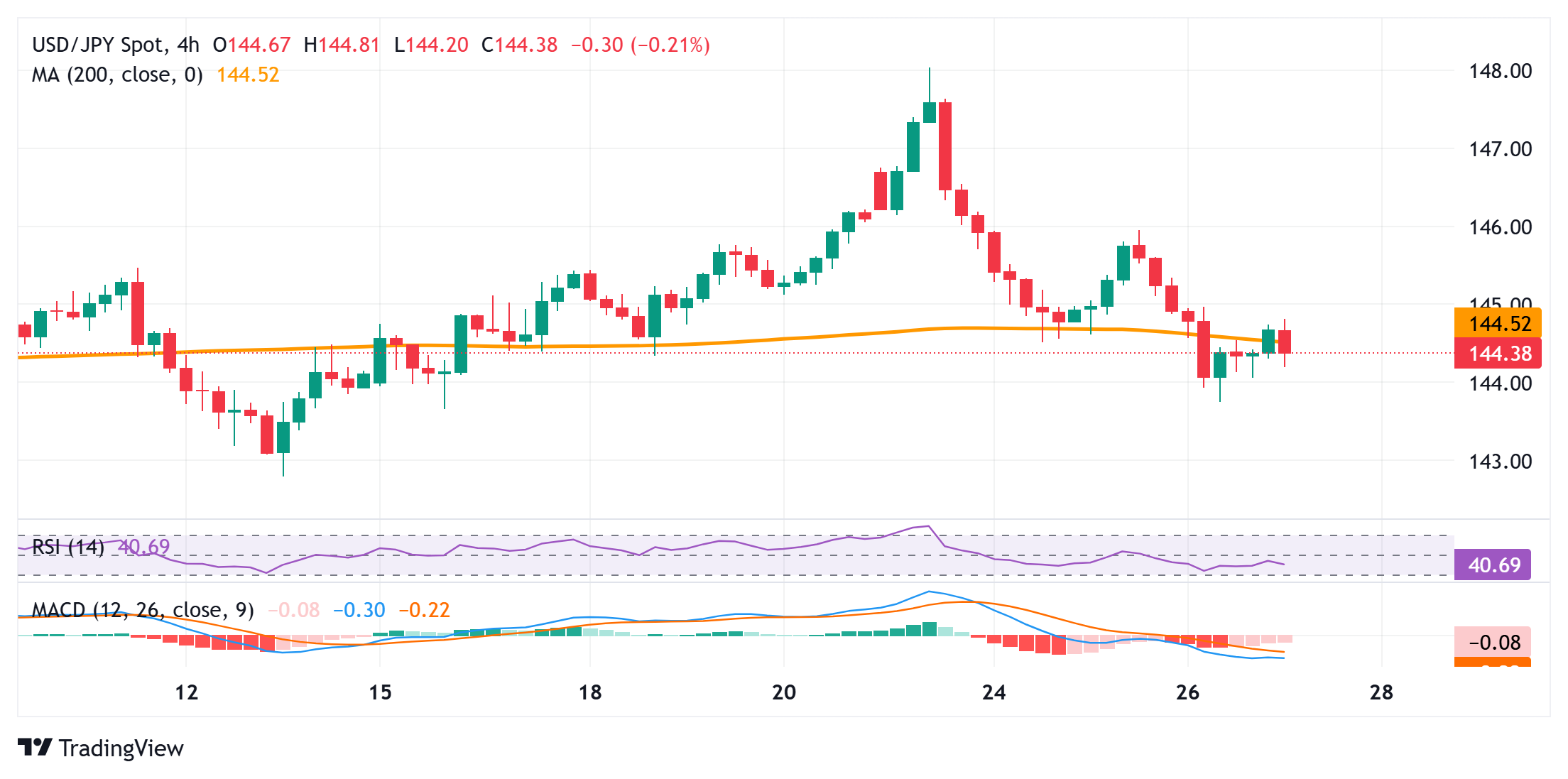Japanese Yen ticks higher against a bearish USD; US PCE inflation eyed for fresh impetus

- The Japanese Yen reverses modest intraday downtick led by a softer Tokyo CPI on Friday.
- Bets that the BoJ will hike interest rates further and continue to act as a tailwind for the JPY.
- The USD languishes near a multi-year low and weighs on USD/JPY ahead of US PCE data.
The Japanese Yen (JPY) attracts some dip-buying on Friday and remains close to a one-and-half-week high touched against its American counterpart the previous day. The initial market reaction to the softer Tokyo Consumer Price Index (CPI) and rather unimpressive Japan’s Retail Sales turned out to be short-lived amid bets that the Bank of Japan will raise interest rates further amid the broadening inflationary pressures. This, in turn, acts as a tailwind for the JPY, which, along with a bearish sentiment surrounding the US Dollar (USD), suggests that the path of least resistance for the USD/JPY pair is to the downside.
Traders, however, seem reluctant and opt to wait for the release of the US Personal Consumption Expenditure (PCE) Price Index before placing fresh directional bets. Heading into the key data risk, the growing acceptance that the . The USD/JPY pair might then make a fresh attempt to conquer the 146.00 mark, which if cleared decisively should pave the way for additional near-term gains towards the 146.70-146.75 region and the 147.00 round figure.
Economic Indicator
Core Personal Consumption Expenditures – Price Index (YoY)
The Core Personal Consumption Expenditures (PCE), released by the US Bureau of Economic Analysis on a monthly basis, measures the changes in the prices of goods and services purchased by consumers in the United States (US). The PCE Price Index is also the Federal Reserve’s (Fed) preferred gauge of inflation. The YoY reading compares the prices of goods in the reference month to the same month a year earlier. The core reading excludes the so-called more volatile food and energy components to give a more accurate measurement of price pressures.” Generally, a high reading is bullish for the US Dollar (USD), while a low reading is bearish.
